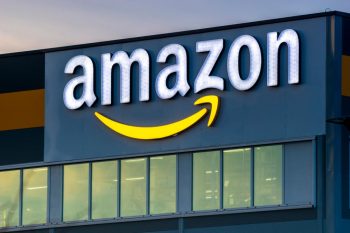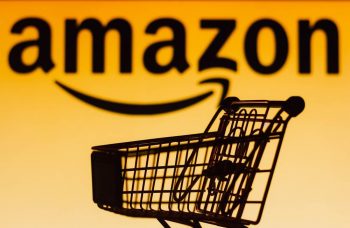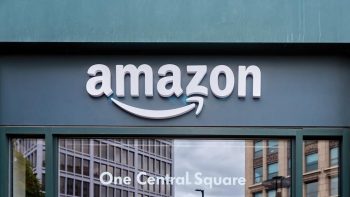
Sourcing on Amazon refers to the process of finding and purchasing products from trusted sources, like manufacturers, wholesalers, or dropshipping companies, and then selling those products on Amazon at a higher price to make a profit. The critical goal is to secure reasonably-priced, high-quality products that can be sold on the platform, allowing sellers to remain competitive and maintain their profit margins.
Sourcing on Amazon is the process of finding and buying products from reliable sources such as manufacturers, wholesalers, or dropshipping companies, and selling those products on Amazon for a profit. The aim is to secure quality products at reasonable prices to stay competitive and maintain profitability. Methods include direct sourcing, wholesaling, private labelling, and retail or online arbitrage.
Different Methods of Sourcing Products
There are several methods for sourcing products to sell on Amazon. These include:
- Direct sourcing from manufacturers: This method involves purchasing products in bulk quantities directly from the source. This ensures better pricing and control over the quality of the products.
- Wholesale: Here, sellers purchase products in bulk at a discount from a wholesale supplier, then repackage and sell them to customers for a profit.
- Private label: In this model, sellers create and sell their own branded products. This can be done by modifying existing items or creating entirely new products from scratch.
- Retail arbitrage: This involves buying discounted products from retail stores and reselling them on Amazon for a profit.
- Online arbitrage: Similar to retail arbitrage, but in this case, sellers buy discounted products from online retailers and resell them on Amazon for a profit.
The Sourcing Process: A Step-by-Step Guide
Let’s dive into the detailed process of sourcing products for Amazon:
- Research Profitable Product Niches: Start by analyzing current market trends, customer demands, and competition to identify profitable product niches. Tools like Jungle Scout and Helium 10 can provide valuable data on product performance, sales volume, and competition.
- Find Wholesale Suppliers or Manufacturers: Look for reliable suppliers or manufacturers that can provide products in bulk quantities at competitive prices. You can locate suppliers through trade shows, industry associations, online directories, referrals, and social media platforms.
- Establish Partnerships: Contact potential suppliers or manufacturers and negotiate favorable terms, including pricing, minimum order quantities, and payment terms. Always verify their legitimacy and product quality before committing to a partnership.
- Set Up Your Amazon Seller Account: Register as an Amazon Professional Seller and choose the Fulfillment by Amazon (FBA) option if you want Amazon to handle storage, packaging, and shipping on your behalf.
- List and Optimize Your Products: Create product listings on Amazon, including high-quality images, detailed descriptions, and relevant keywords. Optimize your listings to improve visibility and conversion rates.
- Monitor Sales Performance and Adjust Strategies: Regularly monitor your sales performance, customer feedback, and other metrics to make informed adjustments to your strategies.
The Role of Amazon FBA
Amazon’s FBA (Fulfillment by Amazon) program can significantly impact a seller’s sourcing strategy. By opting for Amazon FBA, retailers can leverage Amazon’s logistics capabilities, allowing them to focus on sourcing quality products at reasonable prices.
Sourcing Products Internationally
Sourcing products internationally for Amazon can open up new opportunities for sellers. It involves finding reliable suppliers, importing goods, and ensuring compliance with Amazon’s requirements.
Leveraging Amazon’s Seller Central Platform
Amazon’s Seller Central platform assists in the sourcing process by providing various tools and features that help sellers find the right suppliers and products to sell on the platform.
Useful Tools for Sourcing
Several tools and software can aid in the sourcing process for Amazon, including SellerApp Product Sourcing Tool, Helium 10, SmartScout, SoStocked, and Seller Board.
Common Mistakes to Avoid
Avoid common mistakes such as picking an over-saturated niche, not paying attention to customer service, not understanding Amazon’s policies, and sourcing poor-quality products.
In conclusion, sourcing products for Amazon involves a multi-step process that requires thorough research, careful planning, and strategic decision-making. By understanding the different sourcing methods, leveraging Amazon’s resources, and avoiding common mistakes, sellers can find profitable products to sell on the platform and grow their Amazon business.
Frequently Asked Questions
What is the difference between retail arbitrage and online arbitrage?
The main difference lies in where the products are sourced. In retail arbitrage, sellers source products from physical retail stores, while in online arbitrage, sellers source products from online retailers.
What are some criteria to consider when choosing a reliable supplier or manufacturer?
Some criteria to consider include the supplier’s or manufacturer’s reputation, product quality, pricing, minimum order quantities, delivery times, and their communication and customer service.
How can I optimize my product listings on Amazon?
To optimize your product listings, include high-quality images, detailed and accurate product descriptions, and use relevant keywords in your titles and descriptions. Also, ensure your listings are customer-friendly and easy to read.
What are some common mistakes to avoid when sourcing products for Amazon?
Common mistakes include choosing an oversaturated product niche, neglecting customer service, failing to understand Amazon’s policies and guidelines, and sourcing poor-quality products.
How can Amazon’s FBA program benefit sellers?
Amazon’s FBA (Fulfillment by Amazon) program allows sellers to leverage Amazon’s logistics capabilities. Amazon handles storage, packaging, and shipping of products, freeing up the sellers to focus more on sourcing quality products and growing their business.
What are some tools I can use to aid in the sourcing process for Amazon?
There are several tools available, such as SellerApp Product Sourcing Tool, Helium 10, SmartScout, SoStocked, and Seller Board. These tools can provide valuable data and insights to help you source profitable products.











